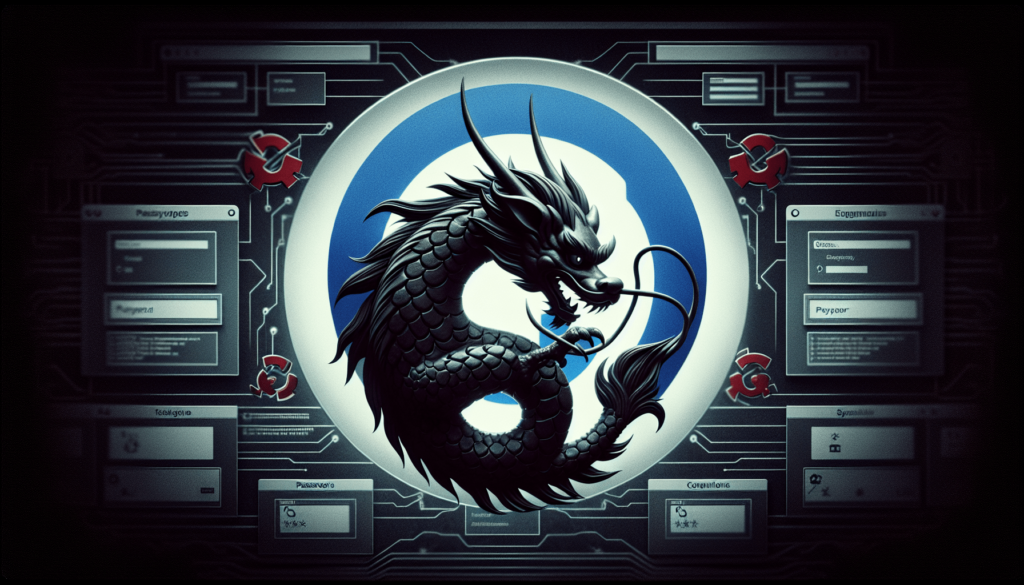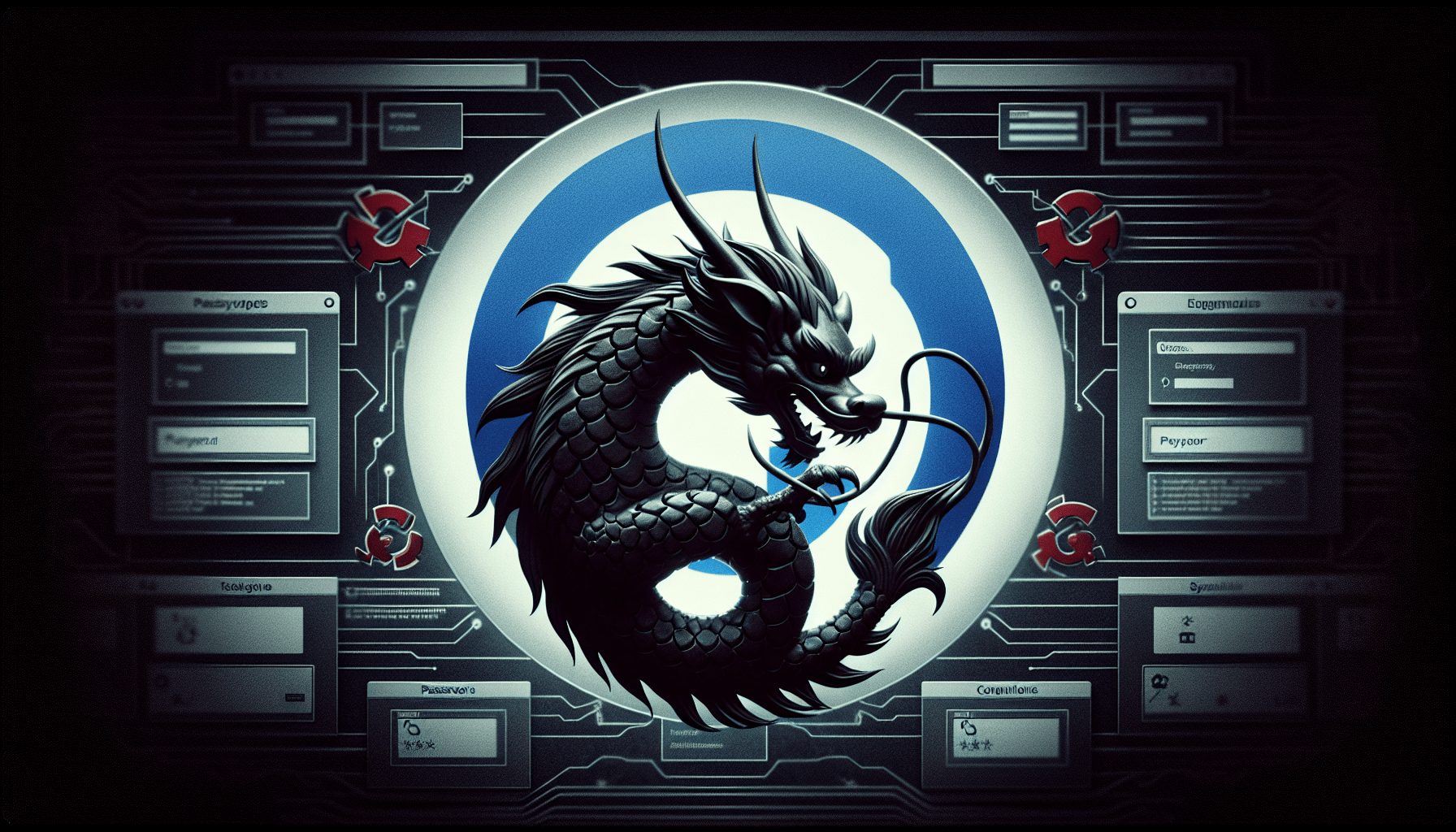Have you ever wondered how secure your saved credentials in Google Chrome are? This question gained new urgency on August 23, 2024, when Qilin, a notorious ransomware group, was exposed for stealing credentials directly from Chrome. Here’s what happened, how they did it, and what you can do to protect yourself.

Qilin’s Startling Scheme: A New Kind of Ransomware Attack
In a cybersecurity landscape teeming with threats, Qilin’s strategy stands out not only for its audacity but also for its innovation. This ransomware group, already infamous due to their attack on Synnovis, upped the ante by deploying a sophisticated credential-harvesting tactic.
Ransomware Meets Credential Harvesting
Researchers at Sophos X-Ops discovered that Qilin didn’t stop at mere data encryption for extortion. They also aimed to steal credentials stored in Google Chrome. This method is unusual for ransomware groups since they typically focus on locking data to demand a ransom. Integrating credential theft into their playbook signifies a major escalation in their criminal activities.
How Qilin Targeted Google Chrome
The choice to target Google Chrome was no accident. With over 65% of the browser market share, Chrome serves as a treasure trove of stored credentials for various online services. But how exactly did Qilin pull this off? Their method reveals a high level of technical skill and strategic planning.
The Domain Controller Infiltration
To begin their attack, Qilin first gained access to the target’s domain controller. Once inside, they edited the default domain policy to inject a logon-based Group Policy Object (GPO). This GPO contained two critical items:
- IPScanner.ps1: A PowerShell script stored in a temporary directory within SYSVOL (the System Volume shared directory on the domain controller). This script aimed to harvest Chrome credentials.
- logon.bat: A batch script with commands to execute the PowerShell script during user logins.
The Harvesting Process
Whenever an infected endpoint logged in, the logon.bat file initiated the IPScanner.ps1 script. This script created two files:
- LD (a SQLite database file)
- temp.log (a text file)
These files were deposited in a new directory on the domain’s SYSVOL share, named after the executing device’s hostname. Harvested credentials were collected in the LD database. Following a successful data collection, the attackers removed the files, cleared event logs, and deployed ransomware to encrypt the system, completing their attack cycle.

How Qilin Slipped Up: The Unfortunate Overconfidence
Like a criminal who returns to the scene of the crime, Qilin’s downfall came from their overconfidence. They left the GPO active on the network for over three days, allowing Sophos researchers to detect the anomaly. This oversight illuminated the full scope of their activities, offering a rare glimpse into the modus operandi of this elusive cybercrime group.
Sophos’ Revelations
Sophos’ in-depth analysis underscored the alarming implications of this dual-purpose attack. They noted, “A successful compromise of this sort would mean that not only must defenders change all Active Directory passwords, but they should also request that end users change their passwords for dozens, potentially hundreds, of third-party sites.” This incident highlights the catastrophic potential when endpoints—a cornerstone of modern workspaces—are compromised.
Why This Attack is a Wake-Up Call
The aftermath of this breach serves as a stark reminder that browser-based password management systems, while convenient, are vulnerable to exploitation. The significant market share Chrome enjoys makes it a prime target for threat actors, turning its user base into potential victims.
Broader Implications for Cybersecurity
This episode could very well open a dark new chapter in the ongoing story of cybercrime. If ransomware groups integrate credential harvesting regularly, organizations will face even greater challenges regenerating secure environments post-breach. The possibility of stolen credentials being used in subsequent attacks or sold on dark web marketplaces adds another layer of complexity.
Mitigation Recommendations: How You Can Protect Yourself
In light of this harrowing event, taking proactive cybersecurity measures is not just advisable—it’s essential. Sophos has recommended several key strategies to mitigate the risks posed by such browser-based credential theft.
Stop Using Browser-Based Password Managers
Though convenient, browser-based password managers have vulnerabilities that can be exploited by cybercriminals. Shifting to more secure password management solutions is a prudent move.
Adopt Reliable Password Manager Applications
Using standalone password managers that follow industry best practices for cybersecurity can provide an additional layer of protection. These applications typically offer features like end-to-end encryption and multifactor authentication.
Implement Multifactor Authentication (MFA)
MFA serves as an additional security layer, making it significantly harder for attackers to gain unauthorized access. It requires more than just a password, rendering stolen credentials much less effective.
Here are the recommendations summarized in a table:
| Risk Mitigation Step | Description |
|---|---|
| Stop Using Browser-Based Password Managers | These are convenient but vulnerable. |
| Use Reliable Password Manager Applications | Such apps use best practices for cybersecurity. |
| Implement Multifactor Authentication (MFA) | Adds an extra layer of security, complicating attacks. |
What This Means for the Future of Cybersecurity
With each new attack, the tactics and strategies employed by cybercriminals continue to evolve. The Qilin incident represents not just an isolated event but a possible harbinger of more complex, multifaceted ransomware attacks. For individuals and organizations alike, this underscores the importance of staying vigilant and continually updating security protocols.
The Importance of Education and Awareness
The more informed you are about these threats, the better you can protect yourself and your digital assets. Whether you’re an individual user or part of an IT security team, continual education about emerging threats and evolving best practices is vital.
Strengthening Defenses
Organizations must fortify their defenses with advanced threat detection systems, regular security audits, and a robust incident response plan. Ensuring that all hardware and software components are up-to-date and well-maintained can make a big difference.
Conclusion: Your Role in Cybersecurity
In an increasingly interconnected digital world, cybersecurity is everyone’s responsibility. While technologically advanced solutions are crucial, the human element—awareness, caution, and proactive measures—remains indispensable. The Qilin incident serves as a potent reminder that the strategies and methodologies of cybercriminals are ever-evolving, and so too must our defenses against them.
A Call to Action
Take some time today to evaluate your own cybersecurity practices. Are you using a reliable password manager? Is multifactor authentication enabled on your accounts? The steps you take now can save you from becoming the next target in an increasingly perilous cyber landscape. Consider this your call to action: Secure your credentials, fortify your defenses, and stay vigilant.
Source: https://www.infosecurity-magazine.com/news/qilin-steal-credentials-google/

